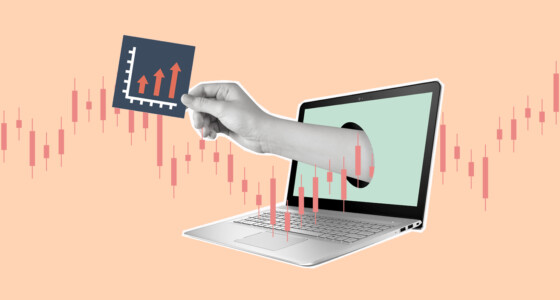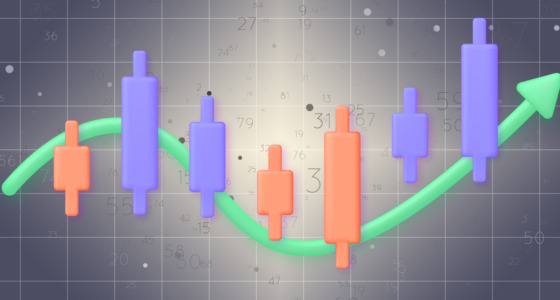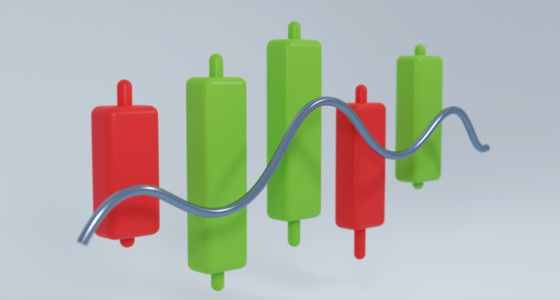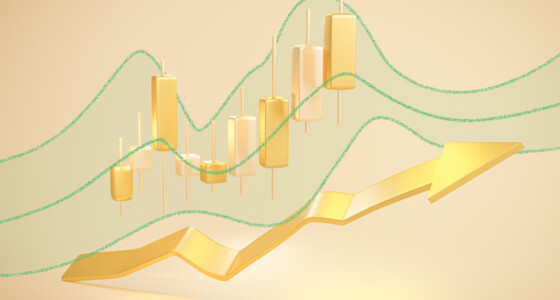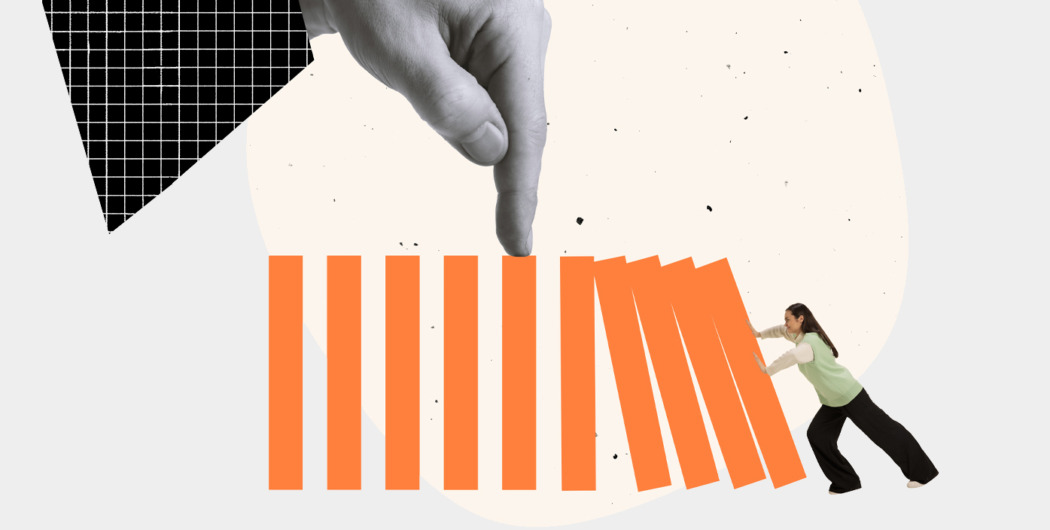

No matter which market you trade on, trends change. If you want to close a position with maximum returns and don’t want to open a losing trade in the wrong direction, you need to know which technical tools can predict a trend reversal. The Dow theory was developed over 100 years ago. However, its principles are still true. One of the theory’s elements says that primary trends are in force until there is a clear reversal signal. Reversals can easily be confused with a secondary trend’s emergence. It can be said that “the trend is your friend until it ends.”
Keep reading to find out the most effective indicators and patterns.
If you are willing to learn the basics of trend trading, read “The beginner’s guide to trend trading.”
How to trade a trend
Before moving to a trend reversal, it’s worth explaining the key stages of price movements. In this article, the trend is considered for major financial markets, including currency, stock, commodity, and cryptocurrency.
Price movements can be divided into four stages.
Stage 1 – Consolidation
During this stage, the market moves sideways so that price fluctuations are narrow. This happens because market markers need a break to define whether market conditions are favorable for a trend reversal or trend continuation. To trade when the price moves within a narrow range, you should know how to define market reversals and breakouts within a strong trend.
Stage 2 – Uptrend (bullish trend)
During the second stage, the price moves within an uptrend, forming higher highs and higher lows. Within an uptrend, traders open long (buy) positions. It’s possible to trade on dips and breakouts in the trend direction.
Stage 3 – Top
Mostly, when the price reaches the top, the degree of volatility increases within a day. This happens because the trend comes to an end. Some market makers still believe the trend may continue, while others try to enter the market at the beginning of the downtrend.
Due to market uncertainties on the upcoming price direction, the asset will move within a narrow range (consolidating).
Stage 4 – Downtrend (bearish trend)
If market makers don’t have the power to push the price up, the market will turn down. When the price forms lower maximums and minimums, it’s a downtrend. Within a downtrend, traders open short (sell) positions. It’s possible to trade on highs or breakouts.
As you can see in the picture, the fourth stage is followed by the first one. This means that the market is cyclical. This article will focus on the first and third stages, as they signal a trend reversal.
Your aim is to define whether the market consolidates within a strong trend or it’s a trend reversal. Wondering how to identify the end of a trend? Keep reading.
Chart patterns

The first option is to find a reversal chart pattern. There are numerous patterns, and they are divided into three groups: continuation, reversal, and bilateral, the latter of which combines the signals of both of the former types. When you seek a trend reversal, it’s not recommended to use bilateral patterns.
Below, you can find the key reversal patterns.
1. Head and shoulders/inverse head and shoulders and double/triple top and bottom
These are different patterns, but they have common rules.
- Head and shoulders and double/triple top are bearish patterns. They form at the end of a bullish trend. You need to draw a line (neckline) through a trough (troughs in a triple top) between the tops. If the price breaks below the line, you can open a sell trade.
- Inverse head and shoulders and double/triple bottoms are bullish patterns that occur at the end of a downtrend. Here, you should draw a neckline through a pick (picks in a triple bottom) between lows. When the price breaks above the neckline, you can open a buy position.
A take-profit order should equal the distance between the neckline and the highest/lowest points of the pattern.
2. Rising and falling wedge
The rising wedge happens at the end of the bullish trend when the price is supposed to decline. A falling wedge occurs at the end of a downtrend, signaling a price rise.
The take-profit target equals the distance between the first highs and lows of the pattern.
Technical indicators
Technical indicators are another way to determine a trend reversal. Below, there are the most popular reversal tools.
1. Moving average
The most effective way to define a trend reversal is to combine two moving averages with different periods. When an MA with a shorter period crosses another MA from bottom to top, it’s a golden cross pattern that signals an upward movement. If the shorter MA falls below the longer MA, it’s a death cross pattern that predicts a downward movement.
2. Stochastic and RSI
Stochastic and relative strength index oscillators provide similar signals. If they enter the overbought area, it’s a sign the market will reverse down soon. A reversal happens when the indicators leave the overbought area. When oscillators are in an oversold area, the price may rise soon. An entry signal occurs when indicators leave the oversold area.
3. Parabolic SAR
Parabolic SAR confirms a trend reversal. When the indicator forms three dots above the price, it’s a sign of a bearish trend. Three dots below the price form when an uptrend is in force.
4. Bollinger bands
The Bollinger bands indicator consists of three lines that react to price actions. When lines come close to each other near the top of an uptrend, it’s a sign of a reversal down. Vice versa, when bands narrow on the bottom, near the lows of the downtrend, you can expect the formation of an uptrend.
The bands diverge at the beginning of the trend.

Candlestick patterns
You can also use candlestick patterns to predict a trend reversal. You don’t need to wait for the price to form complex patterns like head and shoulder or double top. These patterns consist of one, two, or three candlesticks.
The most popular bullish candles are the hammer, a morning star, and three white soldiers. If you seek a downtrend, look for the shooting star, evening star, and three black crows patterns.
Slowing momentum
You can also define a reversal in trend by considering the momentum of the price action.
There are significant price fluctuations at the beginning of a trend. Candles are supposed to be big. By the end of the trend, the level of price volatility usually declines. Candlesticks are supposed to become smaller.
You can use volume indicators that reflect the strength of price actions. The basic indicator is Volumes.
Spot the End of a Trend with Technical Analysis
Technical analysis can help you spot when the trend is about to end. This analysis will focus on patterns and how the price of an asset is likely to move. If the pattern stays the same within the next 50 days, with the price going up and down in a loop, then you likely hit the end of a trend.
Look for a Double or Triple Top
One good strategy is to start looking for double or triple-top patterns. These happen when the price of a certain asset goes past a certain peak, after which it begins to retreat. The price will once more go up, finding resistance at the first peak and forming a double top. If it does go past and keeps stopping at the point above, that’s your triple top.
If it doesn’t seem to budge after that point, you may find yourself at the end of a trade. When you reach this position, it is likely a good moment to sell and close the trade.
Using Moving Average
Another good way to find the end of a trend is to take a look at the moving average. You have several to look for, such as the simple, weighted, exponential, and smoothed averages.
If you are long or short on an asset, the moving average can guide you. If the trend s upward, it will maintain a bullish pattern over your favored moving average. Exponential moving averages can give you the best idea, as they calculate average movements between 25 and 50 days.
Final thoughts
There are several ways to confirm a trend reversal. Remember that no matter which approach you use, you should always confirm the signals by combining patterns with indicators and vice versa. Otherwise, you increase the risks of fake signals.





